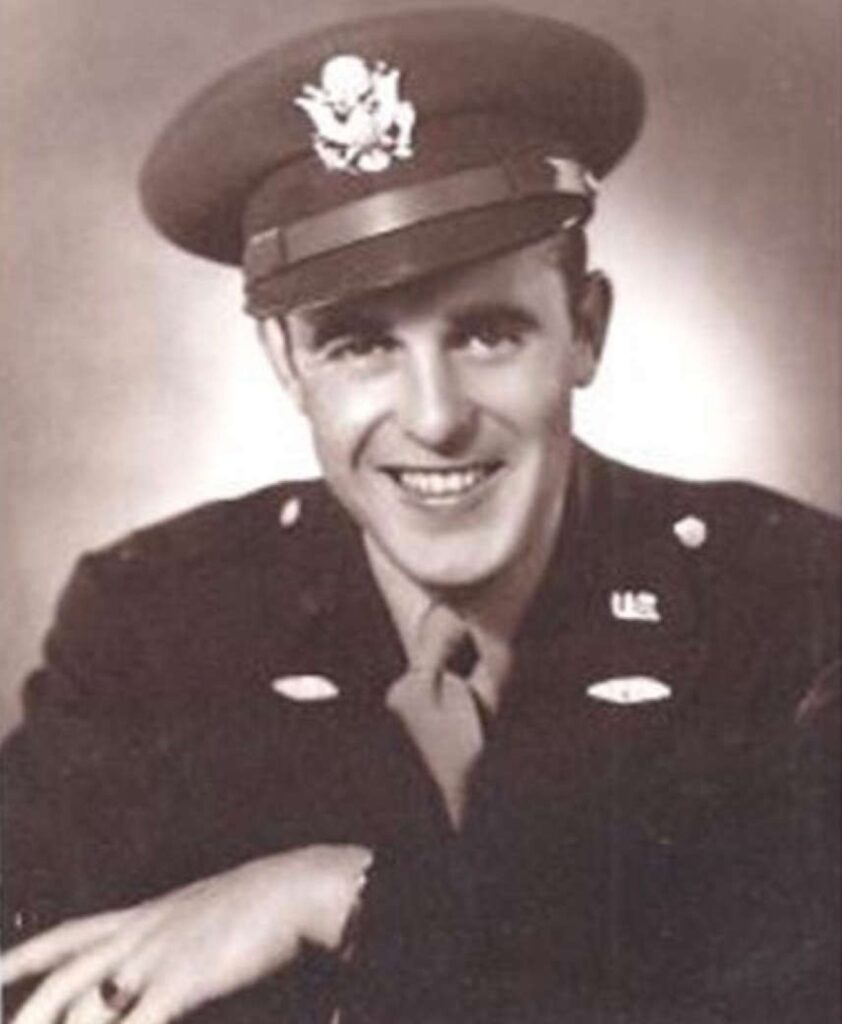Nearly eight decades after he was killed in World War II, a Richmond man’s remains have been positively identified for final burial early next year.
The Defense POW/MIA Accounting Agency (DPAA) announced Nov. 22 that Lt. Gene Walker, a U.S. Army tanker, had been accounted for on July 21, a news release said. Walker died in late 1944 when his tank was struck by an anti-tank round in Germany.
According to a WWII-era news clipping shared by military officials, Walker entered the service in July 1942. After basic training at Fort McClelland, Alabama, and attending Officers’ Candidate School at Fort Knox, Kentucky, he was stationed in Camp Chaffee, Arkansas, before going overseas in June 1944.

Walker, who grew up in Rushville, graduated from high school in 1935 and attended Earlham College one year and Indiana University for two years. He graduated from Richmond’s business college and worked in the office of Automotive Gear Works before entering the Army.
He was the son of Adeline Walker Henley of Richmond and Gus Walker of West Palm Beach, Florida. His survivors also included his wife, Mary Alice (Smyser) Walker, and baby daughter, Anne, whom he had not seen.
In November 1944, Walker had been assigned as the commander of an M4 Sherman tank for Company H, 3rd Battalion, 32nd Armored Regiment, 3rd Armored Division.
Walker’s unit fought against German forces near Hücheln, Germany, when his tank was hit by an 88-mm anti-tank round.
He is believed to have died instantly when the hit caused a fire. The surviving crew bailed out of the tank, but when they regrouped, they couldn’t remove Walker from the tank because of heavy fighting.
In April 1945, military officials said he was presumed dead. After the war ended, American Graves Registration Command began investigating and recovering missing U.S. personnel in Europe.
Workers conducted several investigations in the Hücheln area in September 1948. Local residents were interviewed, but no deceased American servicemembers were reported in the area.
All efforts at that time to locate Walker proved unsuccessful.
However, while studying unresolved American losses in the Hücheln area, a DPAA historian determined that one set of unidentified remains possibly belonged to Walker.
Those remains, designated X-157 Henri-Chapelle, were recovered from one of the burned-out tanks in Hücheln in December 1944.
The remains, which had been buried in Henri-Chapelle U.S. Military Cemetery, an American Battle Monuments Commission site in Hombourg, Belgium, were disinterred in August 2021 and sent to the DPAA laboratory for analysis.
To identify Walker’s remains, DPAA scientists used anthropological analysis, as well as circumstantial evidence. Armed Forces Medical Examiner System scientists used mitochondrial DNA.
The names of Walker and others still missing from WWII already are on the Walls of the Missing at Netherlands American Cemetery, an American Battle Monuments Commission site in Margarten, Netherlands.
A rosette will be placed next to Walker’s name on the wall to indicate he has been accounted for.
DPAA’s partners in Walker’s identification included American Battle Monuments Commission staff and the U.S. Army Regional Mortuary-Europe/Africa.
Previous local identification
About four years ago, Marine officials announced that the remains of a local WWII Marine who was killed in the South Pacific were positively identified and would be returned to Wayne County for burial.
Pfc. Louis Wiesehan, 20, died in November 1943 while trying to secure the small but heavily fortified island of Betio in the Tarawa atoll. The Battle of Tarawa was one of the war’s most deadly battles in the Pacific.
According to a Marines news release, Wiesehan’s remains had been hastily buried there in the fog of war.
After the war the U.S. Army recovered American bodies and investigated Missing in Action cases in the Pacific, centralizing all American remains to one cemetery for later repatriation. However, about half of the known casualties, including Wiesehan, weren’t found. A review board declared his remains unrecoverable in 1949.
However, History Flight found Wiesehan’s remains on Tarawa in 2014, along with dozens of others, and gave them to DPAA. After analysis, Wiesehan’s remains were identified in September 2019.
After a COVID-related delay, Wiesehan’s remains were flown home from Hawaii to Indianapolis in September 2020. Area residents lined the route to watch the police and veteran-led procession to Richmond.
Wayne County Veterans Memorial Park honored Wiesehan with a ceremony the next day, which was National POW/MIA Recognition Day. He was buried at Goshen Cemetery with full Marine honors.
Richmond native Col. Kirk Mullins, program manager for Advanced Amphibious Assault at Program Executive Officer Land Systems, was able to present the flag to Wiesehan’s family.
Identification at a glance
Federal officials announced the positive identification of remains for U.S. Army 2nd Lt. Gene F. Walker, 27, of Richmond, who died when his tank was hit in World War II.
Walker will be laid to rest early next year in San Diego, California. For family and funeral information, contact the Army Casualty Office at 800-892-2490.
For additional information on the Defense Department’s mission to account for Americans who went missing during military service, visit www.dpaa.mil.
Nearly 81,000 U.S. service members remain missing after serving in WWII, wars in Korea and Vietnam, and other conflicts.
A version of this article appeared in the November 29 2023 print edition of the Western Wayne News.
